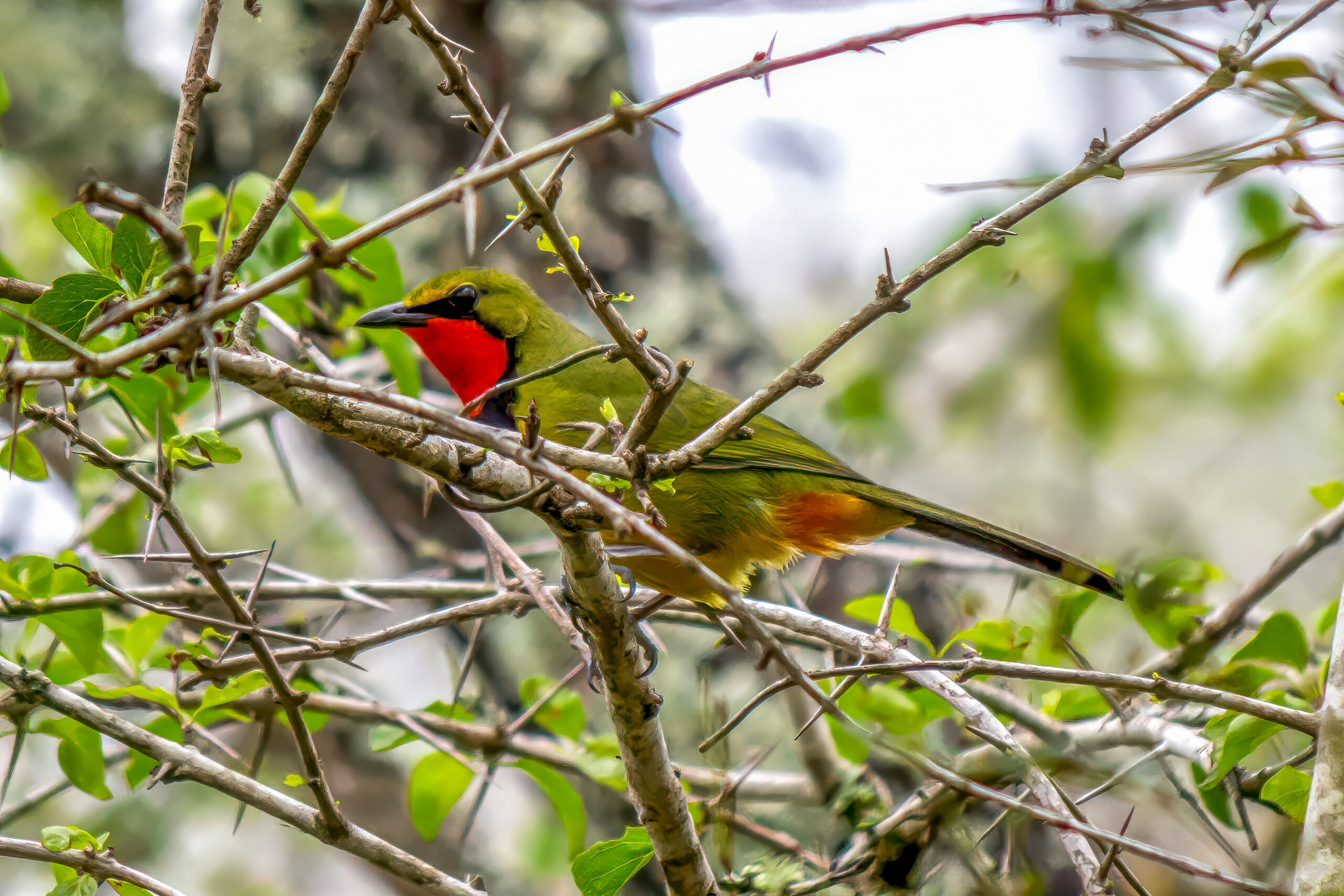Description
The black-backed puffback (Dryoscopus cubla) is an African species of bird in the bushshrike family. It grows to a length of 16-18 cm (6-7 in). Upperparts are black with white markings, and underparts are white. Females are generally a bit duller in appearance, and less black on the head. Eyes are bright red, and the beak is short and straight with a slight hook at the end. The puffbacks are known for their courtship display, where the male fluffs out his rump plumes making him get the appearance of a white ball. When in flight, this looks quite peculiar.
Diet & habitat
The black-backed puffback prefers thick bush, woodlands, riverine forests, and gardens with enough trees. It is commonly seen in the canopy where it, either alone or in pairs, looks for prey amongst the foliage. It almost exclusively feeds on insects but does also feed on fruits and bulbs.
Nesting
Breeding season can be almost year-round, but in southern Africa it peaks in the period September-December. The female builds the nest, while the male helps in the gathering of materials. The nest is a small cup made of grass, roots and bark bound together using spider webs. It is lined with grass, and often camouflaged with lichen and bark. Two to three eggs are laid and incubated by the female for 13 days. The male provides her with food and will sometimes take over the incubation for short periods to let the female forage for herself. After the nestlings have hatched the male gives the female food, mainly insects, for her to feed the young. Chicks leave the nest after 18 days but will be dependent on their parents for another three weeks. Young can stay within the territory until the next breeding season.
Status
The black-backed puffback is common within its distribution and does well in habitats close to humans. It is not threatened and is considered as least concern by the IUCN Red List.









